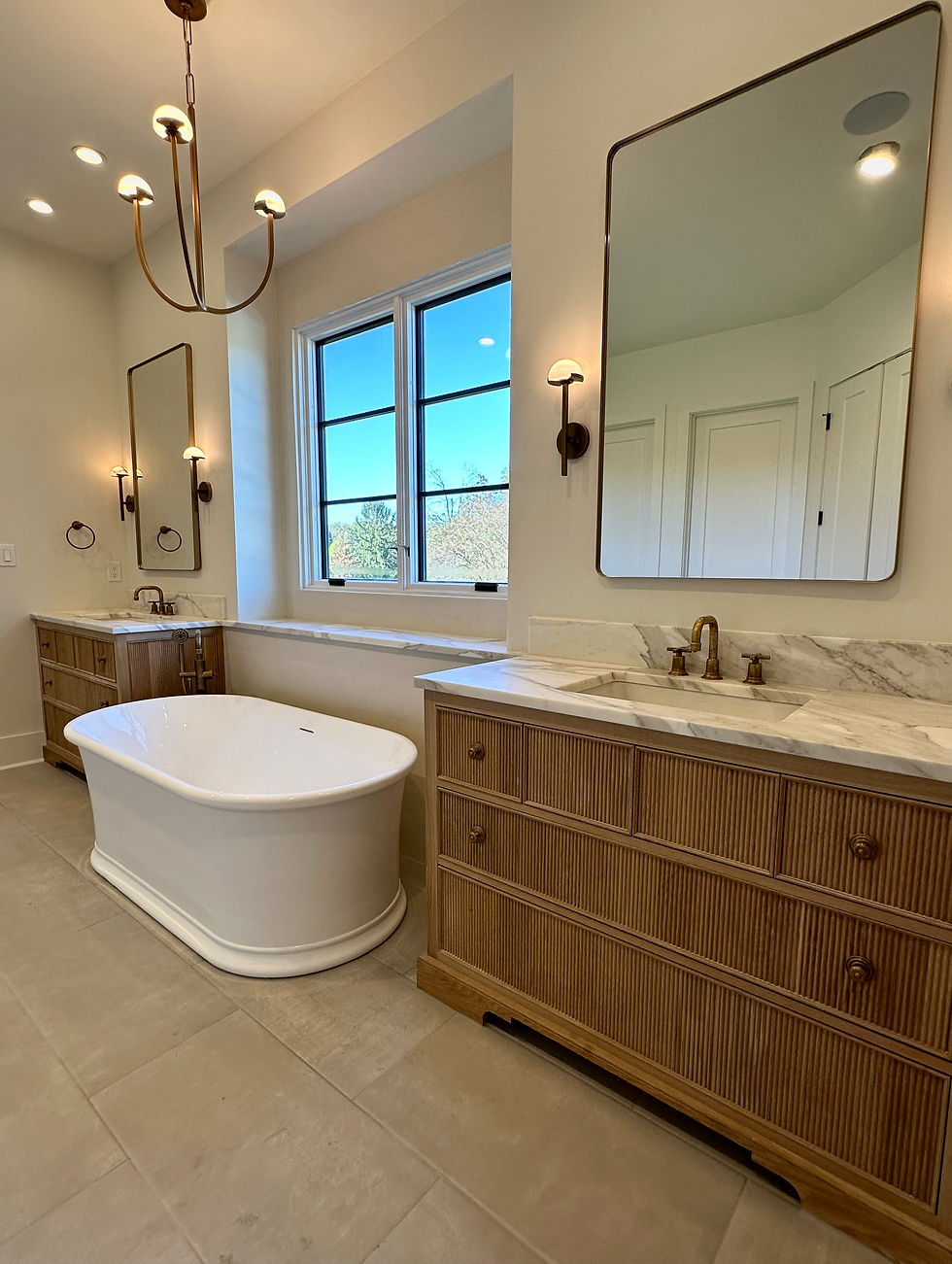How to Budget for Your Bathroom Remodel Without Sacrificing Quality
- Christian Tipton

- Nov 9, 2024
- 4 min read
Updated: Nov 19, 2024
A bathroom remodel can be one of the most rewarding home improvement projects you undertake, but it can also be one of the most expensive. The good news is that with careful planning, you can stick to a budget while still achieving the high-quality results you want. Whether you decide to tackle the project yourself or hire a contractor, here's six strategies that can help you keep costs down and avoid costly mistakes.

1. Set a Realistic Budget from the Start
The first step in any successful bathroom remodel is setting a realistic budget. A typical bathroom renovation costs anywhere from $5,000 to $15,000, depending on the scale of the project.
If you’re planning a DIY remodel, make sure to research the costs of materials and tools upfront. Be sure to leave room in your budget for unforeseen issues like plumbing problems or structural repairs, which can arise during the renovation.
Pro Tip: Always set aside 10-15% of your budget for unexpected costs. Whether you’re doing the work yourself or hiring a contractor, surprises are almost always part of the process.
2. Prioritize Your Must-Haves
When planning your remodel, take the time to determine what is most important to you and what you can live without. If you’re working within a strict budget, focus on features that will provide the greatest impact or are necessary for functionality.
For example, upgrading the shower and adding new lighting can drastically improve the look and feel of your bathroom, while other elements—such as custom cabinetry or high-end tile—might be lower on the priority list. A contractor can help you identify where to splurge and where to save based on your budget and goals.
Tip: Whether you’re remodeling yourself or with a professional, creating a clear priority list can help keep the project on track and within budget.
3. Choose the Right Materials
One of the easiest ways to save money on a bathroom remodel is by choosing cost-effective materials that still look great. While luxury options like marble countertops or designer tiles might be tempting, there are many affordable alternatives that offer similar aesthetics.
For instance, high-quality ceramic or porcelain tiles can mimic the look of pricier stone options, while quartz countertops offer a durable, budget-friendly alternative to granite. Even simple design updates, like fresh paint or new hardware, can create a dramatic change without the high price tag.
Pro Tip: Whether you’re doing the work yourself or working with a contractor, be open to considering less expensive materials that still give you the desired look and feel.
4. Consider Professional Help for Complex Work
While some aspects of a bathroom remodel—like painting or installing new hardware—can be done by most homeowners, other tasks, such as plumbing, electrical work, or tiling, require specialized skills. If you’re tackling a larger remodel, hiring a professional for certain tasks can save you time and money in the long run.
Contractors bring years of experience, the right tools, and knowledge of local building codes, which can prevent costly mistakes and delays. If you’re unsure whether a particular task is within your skillset, it’s worth considering getting a professional's help for the more technical aspects of the remodel.
Tip: Hiring a contractor for key tasks ensures the work is done to code, preventing costly future repairs.
5. DIY Some Tasks, But Know Your Limits
If you’re confident in your abilities, there are several aspects of a bathroom remodel you can do yourself to save money, such as painting, installing new light fixtures, or replacing hardware. However, be realistic about what you can handle. If the project involves plumbing, electrical work, or major structural changes, it’s often more cost-effective to hire a professional.
While DIY projects can be a great way to save money, cutting corners on complex tasks can result in expensive repairs down the road. Weigh the potential savings of doing it yourself against the risk of costly mistakes.
Tip: If you’re unsure about taking on a certain task, consult with a professional before you dive in. It’s better to ask for guidance than to face expensive repairs later.
6. Plan for the Long-Term
When planning your remodel, think about the long-term value of the changes you're making. A bathroom remodel can increase the value of your home, especially if you’re focusing on functional upgrades like new plumbing fixtures, updated lighting, and energy-efficient features. Even small improvements—such as new flooring or a fresh coat of paint—can make a big difference in both the look of your bathroom and your home’s overall appeal.
Pro Tip: If you’re planning to sell your home in the future, keep resale value in mind. Simple, clean updates tend to offer the best return on investment.
Final Thoughts
A bathroom remodel doesn’t have to be a financial burden if you plan ahead and prioritize wisely. Whether you decide to take the DIY route or hire a contractor, being strategic with your budget and making informed decisions about materials and labor will help ensure a successful renovation.
If you're considering a remodel and want professional guidance on how to make your budget stretch further, we're here to help. Make the most of your investment while achieving the bathroom of your dreams.


Comments